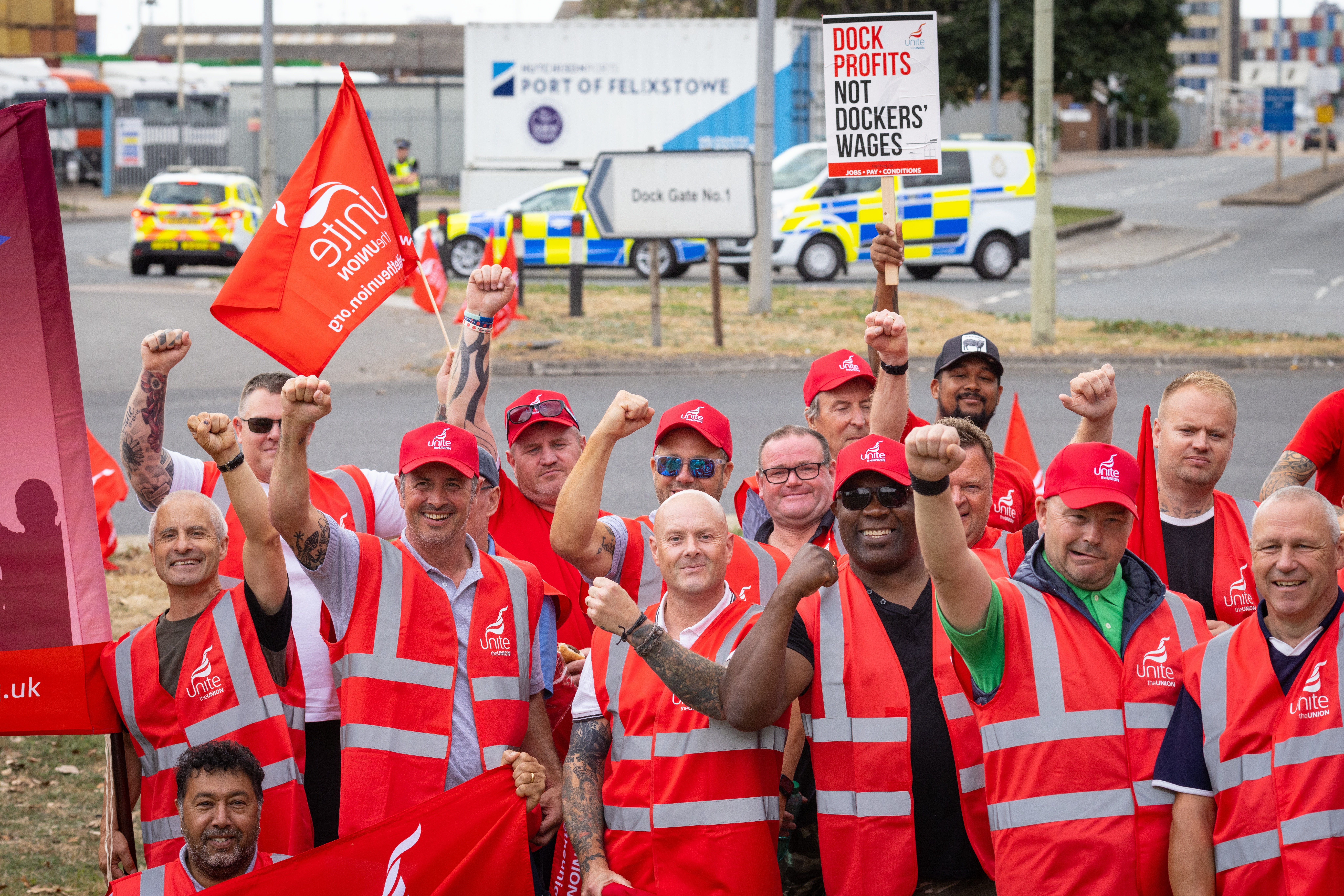Truss and Sunak need to realise that banning strikes isn’t the answer
Letters to the editor: our readers share their views. Please send your letters to letters@independent.co.uk

Both contenders remaining in the Tory leadership race, Liz Truss and Rishi Sunak, have expressed the authoritarian view that strikes in essential services should be outlawed.
A more egalitarian solution might be to mandate face-to-face meetings between the union leader, the CEO of the company and a senior government minister. Twelve or sixteen hours a day until compromise is reached might concentrate all their minds.
Susan Alexander
South Gloucestershire
Higher quality jobs
Regarding the issue of labour shortages, I doubt being in the EU would have made any difference.
Spain, for example, is facing such chronic labour shortages that it is recruiting workers not from other parts of the EU, but from Latin and South American countries such as Ecuador, Colombia and Honduras.
France 24 reported on the subject in June and quoted one Benidorm restaurant owner: “Two weeks ago, we’d lined up 10 people for interview, but none of them showed up!”
The problem is simple. In 2022, people want something better than low-skill, low-pay, unsociable-hours-with-no-prospects jobs.
Des Brown
Newcastle upon Tyne
Respect and tolerance
Smriti Singh’s piece about Islamophobia from the British Hindu community resonates with me, but I have found British Sikhs equally derogatory towards Muslims.
I have lost count of the number of times my heart has fallen when British Hindus or Sikhs refer to Muslims as “P****” before launching into bigotry about Islam.
Guru Nanak (1469-1539), revered by both Hindus and Sikhs, famously said after his enlightenment: “There is no Hindu and no Muslim.” The founder of Sikhism was trying to encourage human beings to treat each other with respect, kindness and tolerance.
Kartar Uppal
Sutton Coldfield
The Danish success story
John Rentoul writes that it took 600 years for Denmark to become Denmark. The Danish monarchy can trace its origins to Gorm the Old, circa 900-958, and the southern border was established at the River Eider by the Treaty of Heiligen in 811 between the Danish King Hemming and Charlemagne. So, it’s taken a little longer than 600 years to become Denmark.
From a multilingual and multinational medieval state, it took the losses of Skåne in 1658 to Sweden, Norway to Sweden in 1814, the Duchies of Schleswig Holstein and Lauenburg in 1864, and the partial return of Schleswig to Denmark in 1920 to create the Denmark of today.
The Danish language wasn’t really unified until Protestantism and printing, having been a variety of dialects from the southern borders where Frisian was spoken, to the capital in Copenhagen, where the court spoke often spoke French or German, and the great Danish playwright noted that one speaks Danish only to one’s servants.
Economically agrarian until the 1940s, the development of a knowledge-based economy, dominated by services with only 2 per cent of employees engaged in agriculture, has transformed the country, which now has the seventh-highest income per capita in the world.
There are many measures of educational success, and Denmark is number one in at least one of them. Scotland can seek to emulate Denmark, but it won’t be quick, and I think that the Brexit experience has been salutary for most of us.
The best way to be Danish is to move to Denmark, but that’s not easy, and despite being married to a Dane for more than fifty years, I have given up on the idea.
Chris King
London
Diversity at the Fringe
Years ago, as an Edinburgh Fringe veteran, I penned a letter published under the heading “Edinburgh whites up for the Fringe”. While I feel it’s self-explanatory, it was of course to do with the very limited number of black or brown faces (apart from my own) I ever saw during weeks of traipsing the streets and venues between 2009 and 2014.
To keep up to speed with all the latest opinions and comment, sign up to our free weekly Voices Dispatches newsletter by clicking here
Things have changed marginally. Advertisers try to include brown faces on the billboards.There are the regular African choirs and some Black comedians. It remains, however, largely a middle-class, white people’s summer bash. A playground of the unchallenged.
This year, however, in a much depleted/subdued event, I noticed something interesting while gazing at the half-hearted posters along Princes Street.
Among the gaudy, smiling, fun-having, gregarious, hilarious, costume-clad white acts were images from photo exhibitions. These featured people in long-forgotten conflict zones – fighting, struggling, being harassed by police. Almost exclusively these are images of Black and brown people.
Somehow, this year, Edinburgh really has become truly representative of world reality.
Amanda Baker
Edinburgh






Join our commenting forum
Join thought-provoking conversations, follow other Independent readers and see their replies
Comments